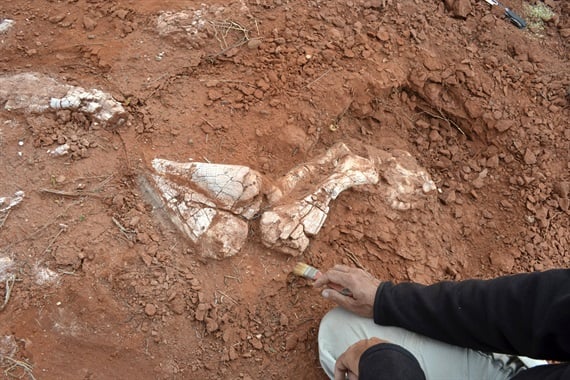Archeologists in Argentina have discovered fossils of a giant and oldest dinosaur, which lived more than 200 million years ago in the western part of this country.

Argentinian archaeologists unearthed fossils of the giant dinosaur Ingenia Prima in San Juan province
The fossil, which the researchers named Ingenia Prima, is three times larger than the fossil size of the largest dinosaurs of the Triassic period. The fossil was discovered in 2015 in the Balde de Leyes area in the province of San Juan, 1,100 km from the capital Buenos Aires.
Cecilia Apaldetti, a researcher at the University of San Juan’s Museum of Natural Sciences (IMCN) Cecilia Apaldetti, said archaeologists found fossils of some of the specimen’s cervical vertebrae, tail, forelimbs and hind legs. above.
According to Apaldetti, Ingenia Prima may belong to the group of sauropod dinosaurs (Sauropoda) with 4 legs, herbivores, easy to recognize because of its very long neck and tail. Before finding this specimen, experts believed that this giant dinosaur lived in the Jurassic period, 180 million years ago. Co-author of the fossil study, Ricardo Martinez, thinks that Ingenia Prima belongs to the late Triassic, possibly 205 million years ago.

Argentinian archaeologists unearth fossils of giant dinosaurs
The group of experts is conducting research on the Triassic period (lasting from about 250-200 million years ago), the time when dinosaurs had just begun to appear. The first dinosaurs were small in size, then gradually evolved to become giant animals to defend themselves.
According to IMCN experts, the bone fragments of Ingenia Prima show cyclical, seasonal growth and have different bone tissue than other Sauropoda species, allowing it to grow very quickly. Ingenia Prima can grow up to 8-10m tall, because the fossil found belongs to a new large dinosaur 6-7m high. This species can grow to weigh about 10 tons, equivalent to 2-3 South African elephants.
The Balde de Leyes archaeological site in the province of San Juan was first discovered in 2001, and since 2014 Argentinian archaeologists have found hundreds of specimens in this area.





